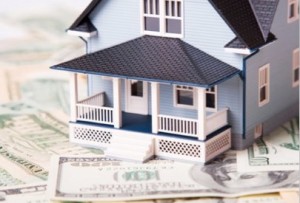It’s a challenging market for home sellers right now. Buyers have a lot of options—and they don’t have to buy what you’re selling. Your house is likely just one located in a sea of for-sale signs, so you can’t be sloppy about putting it on the market.
Luckily, we’ve rounded up the dos and dont’s that will help you collect thousands (if not hundreds of thousands!) for your place.
 1. Don’t … ask for too much money.
1. Don’t … ask for too much money.
Yes, you know what you paid for the house. But that doesn’t mean that it’s still worth that amount—or that it’s appreciated in value since you bought it. “Your house is only worth what the market is willing to pay you,” says certified financial planner Ellen Derrick of LearnVest Planning Services, who has bought and sold at least eight homes, including investment properties. “It doesn’t matter what’s in it. And it doesn’t matter what your mortgage is.” Your realtor has an eye on the market and knows what kind of prices homes—just like yours—are garnering now. Pricing your home too high will discourage interested parties from making an offer, and your property could sit for months, which isn’t your goal.
What to do: Have a few realtors give you a price on the home (or get a comparative market analysis), and—this is key—don’t ignore them. Keep in mind that even if you’ve made pricey improvements to the home (granite countertops, stainless steel appliances), you may not get your money back if you’re the only home on the block with such upgrades. If comparable kitchens in the neighborhood don’t have similar upgrades, buyers aren’t expecting fancy perks in yours, and may not be willing to pony up for the difference.
2. Don’t … skip the marketing.
You may think that all you have to do is take one photo of the house, stick a “For Sale” sign in your yard and buyers will come pouring in the door. Au contraire. “The only way to guarantee that you’re going to get the highest price for the house is to use all of the marketing options available to you,” says Holly Mellstrom, a realtor in Pelham, NY. “This means Internet advertising, 30 pictures of your house, public open houses and even postcards.” The more people who see your house, the better your chances are of selling it. In an age when buyers start their searches online, counting on drive-bys and word of mouth isn’t enough anymore.
What to do: Don’t wait until the last minute to notify a realtor that your house is for sale. If you can, give her at least a month of lead time, so she can research comparable homes and set a good price. “Give them time to book their favorite professional photographer,” Mellstrom says. “And give them time to photograph your house on a day the sun is out.” In fact, if you live in a seasonal area, and you know that you’re going to put the house on the market in February, have photos taken in September, when the grass is still green and the trees have leaves.

3. Don’t … go it alone, unless you know what you’re doing.
If you’ve bought and sold half a dozen homes of your own or you live in a sought-after neighborhood where they sell in two days, you might be able to pull off a For Sale By Owner. If you aren’t a seasoned pro, however, let a professional take the reins. “Some people don’t buy and sell houses more than once or twice in a lifetime, and there’s a lot of money at stake,” Mellstrom says. “And there are so many disclosure laws now. Depending on the laws in your state, you’re really accepting some liability by trying to sell it yourself, unless you have a friend or an attorney who can guide you through the process.” A realtor also knows what’s selling around you, and for what price. She can tell you whether an offer is reasonable, and help you negotiate smartly. Plus, you may not save as much as you think in the end. “People who buy For Sale By Owner houses automatically discount the price they’re willing to offer because there is no realtor involved,” Mellstrom says.
What to do: If you can, get a realtor recommendation from a friend or colleague. Check references, conduct interviews and go with someone with a proven track record.
RELATED: So You’re Ready to Hire a Realtor
4. Don’t … neglect to fix things that are broken.
If sellers walk through your house and spot a handful of items that need immediate repair, they’re going to wonder how well you’ve maintained the things they can’t see. The entry way is a big tip-off. Got a loose hand rail on the steps, sagging screen door or jiggly door knob? Fix them. Clear your gutters, patch holes in your walls and address dripping faucets.
What to do: Do a walk-through of your own home, pretending that you’re seeing it for the first time. What things have you always meant to fix? Now is the time. Spend a few weekends dealing with all of those niggling projects to get your home in show-worthy shape.
5. Don’t … get emotionally involved.
Yes, it’s your house. Yes, you sweated blood and tears to get it just the way you wanted it. But, no, that does not make it someone else’s “perfect,” particularly when you’ve made some unique decorating decisions. You want the space to look as neutral as possible, so buyers can envision themselves in the space. So even if those teal walls in the bedroom look knock-out great with your duvet, they probably won’t match anyone else’s things. Let go of the features you love, and make it a house most people could love—and that might mean painting all of the walls a soft, neutral color. “My office at home is a robin’s egg blue,” Derrick says. “But if we get ready to sell that house, you can bet I’m repainting it.”
What to do: Have a realtor walk through your home, and when she tells you what you’ll need to change to make it marketable, listen to her. Start thinking about your house as a commodity, not an extension of your identity. If buyers don’t love it, it’s not a personal insult. It’s simply a deal that didn’t work out.
RELATED: 3 Unusual Tips to Help You Sell Your Home
6. Don’t … leave your stuff everywhere.
You want buyers to feel like they could move into your house tomorrow—with their things. And your collectible tchotchkes, photos and utility bills make the space feel a little too personal. “That first impression is really important, and if they’re greeted with a huge photograph of you on your wedding day 25 years ago over the fireplace, that’s really distracting,” Mellstrom says. “It sends the message to the buyer that ‘This is my house, not your house.’”
What to do: Before you put the home on the market, get a few boxes and grab every extraneous thing you see: photos, knick-knacks, books. If it helps, take a few pictures of each room, and try to view them through a buyer’s eyes. What could you remove from each room to make the space feel bigger? “You want it to look like a hotel room,” Derrick says. “Hotel rooms look comfortable, but they don’t look like they’re somebody else’s comfortable.” Also? Don’t hang out at showings. While you may want to tell prospective buyers about all of the things you’ve done to the house, it’s best to leave them be. If there’s some information you think is important for them to know, leave a flyer on the kitchen counter.
RELATED: Tackle 40 Household Tasks With Only These 5 Items
7. Don’t … get offended by a lowball offer.
Just because someone came in with a really low bid is no reason to walk off in a huff. Now’s your chance to negotiate. “Buyers are trying to buy your house for the lowest price possible,” Mellstrom says. “Don’t blow them off. They might love your house. You can’t blame them for trying.” In other words, it’s not personal, and it’s not a slam on your housekeeping. It’s a business transaction.
What to do: Come back with a counteroffer. Typically, most buyers will come back with a second offer, which is a better indication of what they’re really willing to pay.
8. Don’t … lose a sale over something stupid.
It’s possible to get 99% of the way through a home sale, only to stall out at the end over a minor detail. Don’t be that seller. “I’ve seen people throw away getting a $450,000 house sold over somebody wanting to take the mantle instead of leaving the mantle over the fireplace,” Derrick says.
What to do: Unless it’s an heirloom that’s been in your family for generations, remember that you can probably find another one—but you may not find another buyer at that price. To be safe, if there are things you’re feeling like you can’t live without, such as the curtains you found at a crazy flea market or the light fixture you discovered at an antiques store, replace them with something else before you show the house.
[gravityform id=”13″ name=”Have a question or comment?”]



